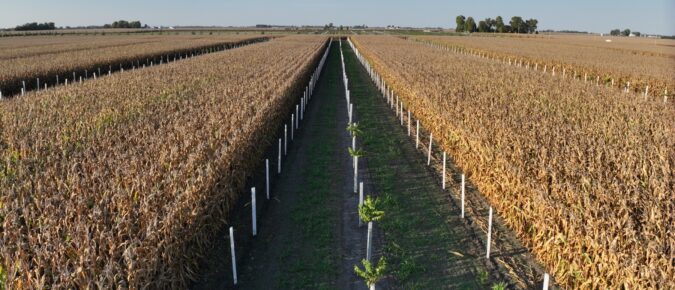A common misconception about livestock manure is that it is simply a waste product of the farm. However, manure is rich in many nutrients and is a valuable resource when applied back onto fields that can benefit from manure application. Research has demonstrated positive impacts to soil quality/health, crop production, and overall farm management when manure is managed effectively.
Karst topography and Silurian bedrock are areas that are more susceptible to water contamination due to shallow soils and increased number direct conduits to groundwater, such as sinkholes. When farming in these areas, and especially spreading manure, it is important to follow all rules and regulations.
Both karst and Silurian are terms related to geological features and formations that have had a significant impact on Wisconsin’s surface and subsurface geology and hydrology. Both Karst and Silurian bedrock are connected to sedimentary processes.
There is a lot of solar being sited in Wisconsin with some projects reaching a pretty massive scale. The traditional narrative has been hello solar, goodbye agriculture, however a new crop of farmers, researchers, and solar companies are thinking differently: how can we continue to farm this land between, under, and around solar panels?
In the increasing discussions about how to address climate change there are conflicting claims about the need to address methane (CH4) emissions. Some people argue that methane emitted by cows is a primary cause of climate change.
The texture of soil, including its composition of sand, silt, and clay, affects water retention and drainage capabilities differently. Sandy soils drain quickly but have low water-holding capacity, while clay soils retain water tightly but have slower drainage. The article provides methods for determining soil texture, such as hand texturing and using online soil maps.
Drought affects pasture as well as crops. During these dry times, what are the considerations that graziers need to keep in mind to optimize forage, and what are the advantages that a rotationally grazed system gives us when we’re short on water? We talk with Mary C Anderson, Wisconsin DNR Grazing Specialist, retired dairy farmer, and current grass-fed/finished beef farmer and Kevin Mahalko from the Gilman, WI area, a grass-fed dairy farmer and president of Grassworks.
Every field and every growing season is different, and determining if added nitrogen will pay off is hard to determine. In early to mid-June take time to collect samples for these two tests: Pre-sidedress nitrate test (PSNT) and early season tissue tests to help you determine how much nitrogen is in the soil and how much is already in the plant.

















